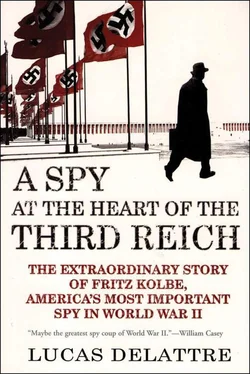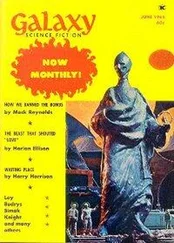The SS report on Hungary illustrated the fears of the Hitler regime about the Reich’s satellite countries. Since the winter of 1942–43 and the rout of the Hungarian Second Army on the Don, Budapest had been plagued by doubt. “Every Hungarian soldier understands that he is being asked to sacrifice himself for interests other than his own…. If a nation begins to free itself from the hated yoke, the system as a whole is going to crack,” wrote Ruth Andreas-Friedrich in her diary on March 22, 1944.
Since the summer of 1943, the authorities in Budapest had been trying to shake off the chains of their alliance with Berlin. The anti-Jewish measures were only laxly followed, a relatively independent press continued to appear, some opposition parties were not banned. But, above all, the Hungarian leaders were multiplying secret contacts with the Allies. In Ankara, Bern, and Lisbon, envoys from Miklós Kállay were holding discussions with diplomatic representatives from London and Washington. Starting in the second half of 1943, Hitler constantly put pressure on Admiral Horthy to change prime ministers.
These details, and many others, were in the file that Fritz removed from the ministry that morning. He thought he had all the time he needed to study the memorandum far from prying eyes. But while working in a room where he thought he could be at peace, the phone rang. At the other end of the line, a colleague spoke to him in a panicstricken tone: “Where is the Kállay file? Ribbentrop is about to go to a meeting with Himmler. He needs the file right away.” Kolbe answered that the file was in his personal safe at the Foreign Ministry. He was the only one with a key. Oddly, he kept cool (afterward, he was astonished that he did not give way to panic). He ran back to the ministry. Fifteen minutes later, he was there, out of breath, his briefcase in hand. He rushed up the stairs four at a time and swept into his office like a whirlwind. There he managed to make it appear that he took the document out of his safe and finally handed it to a colleague standing near him stamping his feet with impatience. A few minutes later, he learned that Karl Ritter, furious, had for an hour been spewing out violent cries of rage against his subordinates and was close to having a breakdown over the incident.
The “Kállay file” would not come into the hands of the OSS. This was a pity, because Fritz knew that the Americans in Bern were vitally interested in everything concerning developments in countries allied to Germany. He had already provided them, since late 1943, with information of the greatest importance about Hungary. Thanks to Fritz, the Americans knew that the Germans were aware of some of their secret conversations with envoys of the Kállay government. During the last week of 1943, Adolf Beckerle, German envoy in Sofia, had transmitted to Berlin an Abwehr report disclosing very confidential statements made by a lieutenant colonel of the Hungarian secret services well known to the secret services in Washington. The man’s name was Otto Hatz. He had disclosed to the Germans the complete contents of his discussions with an American diplomat in Istanbul. The document had come into the hands of the OSS through the good offices of Fritz. It was thus learned in Washington that some Hungarian interlocutors of the United States were playing a double game. Beckerle spoke of this Lieutenant Colonel Hatz as a “trustworthy man,” resolutely “pro-German.” In a Kappa cable sent to Washington in late December 1943, the OSS officers in Bern had pointed out that Trude (Otto Hatz) “is maybe pulling our legs.”
This information of the highest importance was not used as it should be, and the Americans allowed themselves to be caught in a trap with terrible consequences. On March 16, 1944, a team of three American spies, equipped with a radio transmitter, was secretly parachuted into Hungary to prepare a reversal of alliances (the operation, christened “Sparrow,” was masterminded from OSS Bern). But the three agents were captured shortly after their arrival on Hungarian territory and sent to Berlin for interrogation. Furious at the secret dealings of some governing circles in Budapest with the Allies, Hitler had decided to strike a great blow. On March 19, 1944, Germany invaded Hungary and put an end to any inclination toward the emancipation of the country. In place of the Kállay government, a collaborationist government under the leadership of General Döme Sztójay was set up. The strong man of Hungary was now a German from the foreign ministry, the ambassador plenipotentiary, and SS Brigadeführer Edmund Veesenmayer, a career diplomat who specialized in carrying out the regime’s dirty work (posted to the Balkans since 1941, he had been in charge of eliminating the Jews of Serbia).
Hitler knew that the Hungarian leaders were having discussions with the Allies. This was what motivated his decision to invade Hungary. The Americans knew, through Kolbe, that the Germans were closely following their negotiations with the Kállay government. But they did not take precautions to neutralize Lieutenant Colonel Hatz. If they had taken into account information provided by “George Wood,” they might have enabled Hungary to escape a catastrophe: Beginning in late March 1944, the country was placed under the thumb of the SS. A merciless system of repression was put in place. The opposition was sent to concentration camps. Systematic deportation of the Jewish population began.
After the occupation of the country by the Germans, the Americans continued to be very well informed, through Fritz Kolbe, of what was going on in Hungary. In the Foreign Ministry, Ambassador Karl Ritter was the principal contact for Edmund Veesenmayer, the Reich’s proconsul in the Hungarian capital. But it would appear that all of that did no good. In Washington, “George Wood” was not yet considered a totally trustworthy source.
In early spring 1944, everyone in Berlin was savoring something of a respite in Allied bombing. In late March, Fritz learned that he would soon have a mission to Bern. The prospect of resuming contact with the Americans filled him with both enthusiasm and anxiety. Border controls had been reinforced during the last few weeks. The Nazi leaders were more than ever suspicious of people in contact with foreign countries (particularly with neutral countries). They knew from their intelligence services that leaks from Hitler’s headquarters were spreading through neutral countries. Fortunately for Fritz, no one thought of suspecting him in particular, but it was now not infrequent for diplomatic couriers to be subject to a body search when they crossed the border. Sometimes they even had to disclose the contents of their briefcases.
Fritz feared that his trips to Bern had attracted the attention of the Gestapo. Always well informed, the surgeon Ferdinand Sauerbruch had warned Fritz that the chief of protocol of the Foreign Ministry, Alexander von Dörnberg, was interested in his comings and goings in Switzerland. “Something is in the air,” Fritz told himself with foreboding. The intuition had an even firmer basis because he was now part of an active resistance group. For the first time, he was participating in clandestine meetings attended by influential men. More and more often, he met Count Alfred von Waldersee, a former major in the Wehrmacht and an anti-Nazi, who was in the process of going into business through family connections in the Ruhr. Through Ernst Kocherthaler, he had met Walter Bauer, who was close to Carl Goerdeler and resolutely determined to take action.
An economist and an intellectual, Walter Bauer was a former student of Husserl and Heidegger at the University of Freiburg. He had worked for a large coal company in Prague controlled by a Jewish family. When the company was “Aryanized,” the Nazis had offered to make him its head, but he had refused and resigned from his position. Having become independent, he remained active in industry, but he spent a great deal of time in Protestant church circles opposed to the regime. Fritz greatly admired him. He was a self-made man. He had completed his high school studies in evening courses after having been brought up, like Fritz, in the school of the youth movement. The two men were about the same age.
Читать дальше











